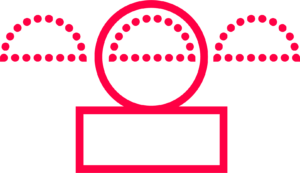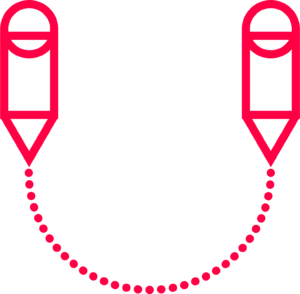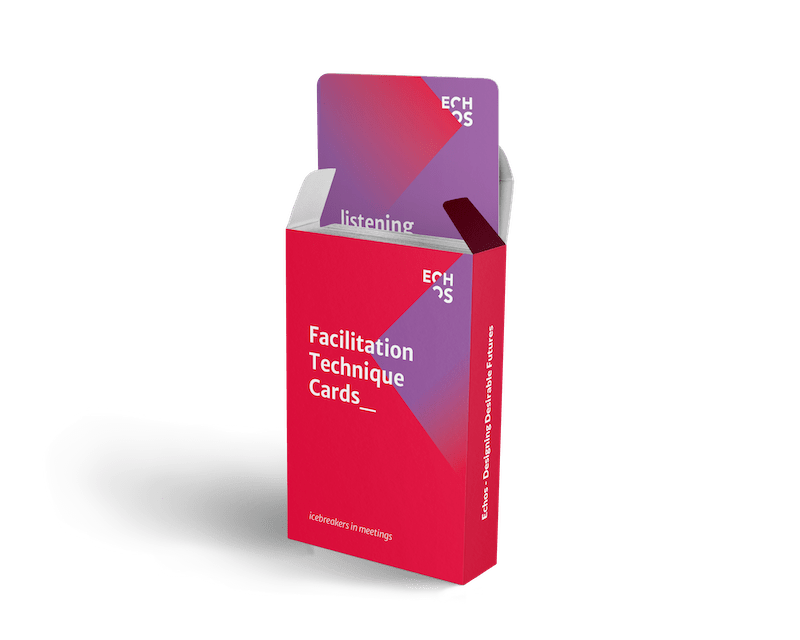How do you make a connection with your audience through digital facilitation?
It’s been over two years since the world moved to its new normal. Some call it the post-COVID world. One significant area the pandemic has affected is training and workshop. Instructors use body language, gestures, facial expressions, movements, and other physical tools in traditional facilitation contexts. However, as all things will be primarily online for the foreseeable future, designers ask how we can meet the moment? How might we close the gaps between online and in-person facilitation, so no one is excluded from the essential knowledge in their industries? For Shirley and Karen, two former students at Echos, it is more than facilitation. It’s a mission to ensure people are included in the shifting economies and that no one is missing out because of technology.
Meet Karen: Hongkong. UX/product designer.
Meet Shirley: Digital Marketing Specialist in a medical tech company.
Both ladies Co-facilitate a UI/UX design course for an academy in Hongkong.
Kenny: What do you really do?
Karen: Designing digital products (apps or software)
Other types of UX designers, but I am more of a conversational designer. Something similar to Alexa or Google Assistant or Siri designing these things for users like everyday people.
Shirley: Before my current role, I was a freelancer helping brands manage their social presence, but now in my current job, I am helping my company fill the communication gap between patients and doctors using digital platforms. I also create educational content in line with medical know-how for patients.
Kenny: What led to taking the facilitation design course
Karen: We are partners in facilitating a UX course in Hongkong as learning instructors. We wanted to dig deeper into facilitating: how it works and the theories. Beyond learning it for this purpose, we also wanted to know it for personal use. We work with so many people cutting across different professions and fields. To achieve success in bringing everyone together, we felt this course would help us.
Shirley: We wanted to learn how to deliver training virtually as we have been used to physical activity.
Kenny: How do you build empathy online with your audience? How do you make a connection through digital facilitation?
Shirley: I changed my job a month ago. I went from working in Hongkong in the office to working fully remotely with people across different countries. The first week, I met with them one on one. Get to know them better. I try to join every meeting. Sometimes I could be an observer and, sometimes, actively involved in collaborative work. This is how I build connections virtually. In addition, try to offer help first so you can earn their trust.
Karen: One thing I learned from the course was that the crowd you are leading needs to trust you. If they don’t have confidence in you, they won’t listen to you. Be observant of each individual and their learning styles. First, have their trust and observe them through ice breakers activities.
Kenny: How do you bring everyone in a room together during facilitating without wasting each other’s time?
Karen: I would say one of the ways to not waste people’s time is to Prepare. Research/know and understand your audience. Know their language. If they are business people, speak their lingo etc. Also, prepare for all or almost scenarios. Understand the event’s purpose and the outcome, so you do not waste people’s time. To sum it up, I’ll say, know your audience, prepare properly, know the purpose and the outcome you wish to achieve.
Shirley. Acknowledge your weakness and lean on others’ strengths. Show vulnerability often. Facilitation process (scheduling)- Outline your goal. Outline the steps and processes.
Although, as much as you want to prepare, you cannot prepare for everything.
Kenny: How to build inclusion (all kinds of diverse people) in what you do? For example, there will always be people who need more time to grasp what you teach.
Shirley: We try to take it slow. Primarily where I work. People are not that technically savvy, so exercise patience. It takes time for them to get used to all the tech elements. What I do is create a tutorial, walk in their shoes, create a step-by-step guide to the customer journey, and do constant check-ins before moving into the next stage. People differ when working across different countries (Thailand, India, Korea, etc.). You have to understand language barriers and work at their pace.
Karen: Another thing I have learned in the course that we experienced in our group was our peers not being tech-savvy, so we had to create other ways to get them involved. For those who could not use FIGMA or had a dead laptop, we encouraged them to share whatever information with us directly, which we would then share in the broader group. Sometimes, it included typing in the comment section. The goal is to always provide multiple ways or solutions to achieve inclusion.
Shirley: Working with colleagues in China, some cannot use Google because of regulations, so content is usually sent via Microsoft. We have collaborative sessions via other means to create balance and inclusion.
Kenny: Do you have any case study or experience you currently apply to your job?
Shirley: Last month, we organised a hackathon for our UX students. It was our first time trying to do something like this. The challenge was how much information we gave them and how much they could assimilate. At first they felt lost because they were not used to doing this. Still, our solution was to ask more questions to inspire thinking. They were able to come up with different solutions and iterations. The success of a facilitator is seeing the students show understanding of what they are learning.
Karen: My case study will be my current workplace. Because we are a startup or a new company, there is little to no structure yet, so things can be done in a disorganised way. Usually, as a designer, we need to facilitate to balance each person’s opinion.
For example, your boss wants something done in a certain way, and you don’t think that’s how it should be done, so how do you bring all of these to get a balance. Facilitation is achieved when everyone’s voice is heard. Typically in a startup, it is boss talks, and everyone acts. We did something different this year where we encouraged people to write in case they felt scared to speak up because the boss or superior was present.
That is one way of facilitating, especially in an unstructured setting.
What I learned was that facilitation brings everyone together.
Kenny: What were the high/unforgettable moments during the workshop at Echos?
Karen: For me, it was in week 4. We had a workshop where someone would facilitate the opening and middle; some people would do the convergent and closing parts. That’s when I saw that we could have different facilitation styles. Usually, in Hongkong, it’s just Shirley and me, so we are used to our styles, but in this workshop, we have people from different countries like New Zealand etc. We had this coursemate, Gwen, who asked everyone to stand up and warm up. We always thought this was only applicable to physical learning. Some classmates cracked jokes etc. I learned there is no one way to facilitate. We can have different facilitation styles to achieve our facilitation objectives.
Shirley: When I was collaborating with my teammates in Australia, while I was in Hongkong, once it was 9pm, they would tell me that it was time for them to go to sleep and they needed to go to bed. I was shocked because in Hongkong we work till 10-11pm, so the culture shock (time zones) was an eye-opener for me.
Kenny: Let’s build a cheat sheet for Facilitation.
Six Tips To Facilitating When People Are Working Entirely Remotely
1 – Get to know your audience by building connections virtually.
2 – Build trust by offering to help in other areas besides leading a course. The crowd you are leading needs to trust you. If they don’t have confidence in you, they won’t listen to you.
3 – Prepare. Research/know and understand your audience. Know their language. Prepare for all or almost scenarios.
4 – Acknowledge your weakness and lean on others’ strengths.
5 – Outline your goal. Outline the steps and processes.
6 – Take it slow. Not everyone is that technically savvy, so exercise patience.
—
Follow us on social
instagram: @echosaustralia
facebook: @ECHOSaus
linkedin: @echos-innovation-lab
youtube: ECHOS Innovation Lab
spotify: Desired, the podcast
How Can We Help?
For training and Innovation Journeys in your company:
check out our in-house course offering.
____
For upcoming courses in your region: visit our website.
____
If you have a special project and would like to use Echos’ consultancy services: send us an email: contact@echos.cc
Want to speak to a real person? Call us on 1300 502 006








